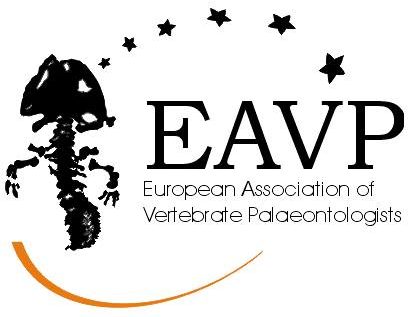Code of Conduct
The EAVP is committed to providing a safe, collegial, productive and welcoming
environment, promoting all principles of Open Science (The FAIR Guiding Principles for
scientific data management and stewardship, Wilkinson et al., 2016), and upholding high
standards of equity.
These standards will apply to all EAVP members, regardless of career and/or educational
progression stage, and to all outside the EAVP with whom EAVP members may interact in a
professional capacity. Similarly, we expect both our members and non-members to adhere
to our Code of Scientific & Ethical Conduct.
Persons to whom this code applies:
All members of EAVP, those who publish in the Association’s publications (e.g.,
Paleovertebrata), including student and regular members, and to all members and those
non-members who participate in EAVP meetings and events, including but not limited to
the Annual Meeting, field and educational settings.
It also extends to social media and other online platforms where EAVP is engaged or
involved, i.e. someone involves EAVP by name.
We expect both EAVP members and non-members to adhere to the following proper
behaviours:
-behave courteously and professionally, considerate, respectful and collaborative
-adhere, where possible, to principles of Open Science and Open Access FAIR principles of
publishing of all data
-communicate properly and decently, without the intentional use of false argumentation
(such as ad hominems, faulty generalizations, etc., see list here List of fallacies –
Wikipedia/Thou shalt not commit logical fallacies (yourlogicalfallacyis.com))
-refrain from misconduct and unacceptable behaviour (listed below) and academic bullying
Misconduct and Unacceptable Behaviour (both online and physical)
Misconduct is any act that violates our ethical principles (see Code of Scientific &
Ethical Conduct).
Misconduct includes, but is not limited to:
- Physical, oral or written abuse (latter two includes online).
- Using slurs, insults based on negative stereotypes, or denigrating jokes.
- Display of images or recordings containing bigoted statements, nudity, sexual
activity, use of physical force against oneself or others. - intentional and unwelcome interpersonal behaviours (think of stalking, physical
contact, sexual advances or proposals, insulting nicknames, aggression, intimidation,
academic bullying and anything that falls under these).
2 - Threats, implied or direct (physical, emotional, psychological, professional,
financial, legal harm). EAVP members who act to threaten members or the
Association itself will be subject to immediate expulsion without recourse of appeal. - Disruption of (online or in-person) conferences or other professional events
- Invasive photography or recording, including of minors without parents/guardians
permission - Recording of talks, posters, draft manuscripts, other research materials without
author’s permission - Anything that can reasonably be assumed to be hostile towards one person or a group
- -abrication or falsification of data, as well as plagiarisation of data, research ideas
or other intellectual property.
Consequences
Not adhering to our set out principles, or engaging in acts of misconduct or
unacceptable behaviour is a breach of our Code of Conduct, and the individual is
therefore subject to disciplinary procedures.
Misconduct includes, but is not limited to: - Exclusion from our Annual Meeting, either once or permanently (refund of any
registration costs remains at the sole discretion of the EAVP executive committee in
consultation with the organizing committee) - Termination of membership, either temporarily (suspension) or in perpetuity (at the
sole discretion of EAVP executive committee)
Moreover, anyone currently under investigation for the inappropriate behaviour that falls
under the above categories, may be subject to exclusion or expulsion at the sole discretion
of the Board. Similarly, any retaliatory behaviour, or any behaviour that threatens the
Association with legal or pecuniary action will also result in exclusion of the individual(s)
concerned at the sole discretion of the executive board, without recourse of appeal.
If investigations have been completed, then the EAVP Board, in collaboration with the Ethics
Committee, must be satisfied that either the investigated individual has been fully
exonerated and absolved of guilt, or that there are manifest expressions of remorse for their
acts (e.g. copies of letters of apology to any victims).
Seniority of institutional position often exerts a disproportionate level of protection by an
institution from more vulnerable junior staff and students. Thus, if it becomes a choice
between an alleged harasser or predatory senior member of staff, or more junior members
of staff or students, EAVP will always prefer to exclude the alleged harasser or predator, in
order that the larger number of (allegedly victimized) junior staff and students can attend
our meetings or events in comfort and security.
Any misbehaviour, misconduct or behaviours that strongly go against our promoted
behaviour, will be reviewed on a case by case basis by the Ethics Committee, the executive
board and/or the anti-harassment committee.
If local organizers code of conduct differs significantly, the code of conduct of EAVP in
general has primacy.
Reporting Code of Conduct violations
You can report violation to the Code of Conduct by contacting the EAVP ethics committee
or any EAVP board member (outside the executive board)
Once the Code od Conduct is accepter, an anti harassment committee will be formed and
other reporting procedures (e.g., webforms) will be implemented.
The code of conduct can be downloaded here
